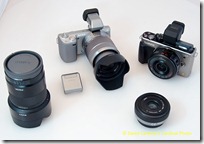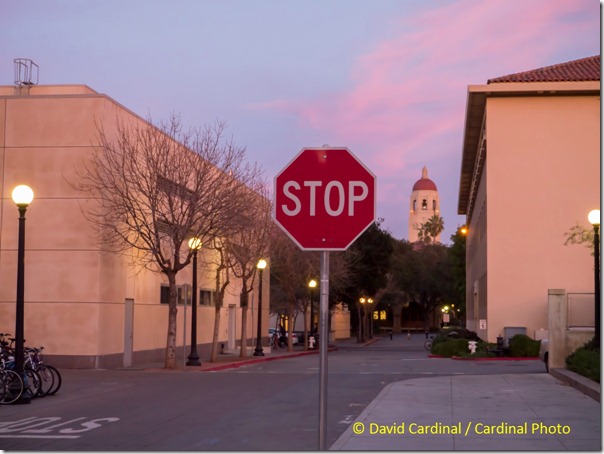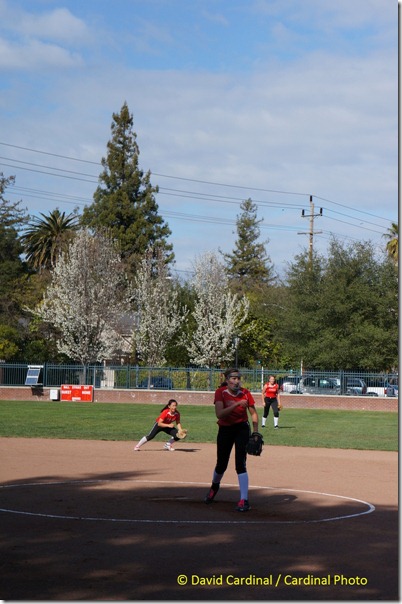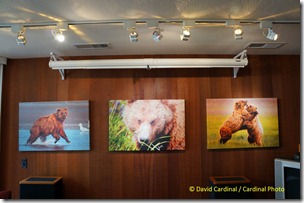- Photo Safaris
- Alaska Bears & Puffins World's best Alaskan Coastal Brown Bear photo experience. Small group size, idyllic location, deluxe lodging, and Puffins!
- Participant Guestbook & Testimonials Candid Feedback from our participants over the years from our photo safaris, tours and workshops. We don't think there is any better way to evaluate a possible trip or workshop than to find out what others thought.
- Custom Photo Tours, Safaris and Personal Instruction Over the years we've found that many of our clients & friends want to participate in one of our trips but the dates we've scheduled just don't work for them or they'd like a customized trip for their family or friends.
- Myanmar (Burma) Photo Tour Myanmar (Burma) Photo Tour December 2017 -- with Angkor Wat option
- Reviews Go hands-on
- Camera Reviews Hands-on with our favorite cameras
- Lens reviews Lenses tested
- Photo Accessories Reviews Reviews of useful Photo and Camera Accessories of interest to our readers
- Useful Tools & Gadgets Handy tools and gadgets we've found useful or essential in our work and want to share with you.
- What's In My Camera Bag The gear David Cardinal shoots with in the field and recommends, including bags and tools, and why
- Articles About photography
- Getting Started Some photography basics
- Travel photography lesson 1: Learning your camera Top skills you should learn before heading off on a trip
- Choosing a Colorspace Picking the right colorspace is essential for a proper workflow. We walk you through your options.
- Understanding Dynamic Range Understanding Dynamic Range
- Landscape Photography Tips from Yosemite Landscape Photography, It's All About Contrast
- Introduction to Shooting Raw Introduction to Raw Files and Raw Conversion by Dave Ryan
- Using Curves by Mike Russell Using Curves
- Copyright Registration Made Easy Copyright Registration Made Easy
- Guide to Image Resizing A Photographers' Guide to Image Resizing
- CCD Cleaning by Moose Peterson CCD Cleaning by Moose Peterson
- Profiling Your Printer Profiling Your Printer
- White Balance by Moose Peterson White Balance -- Are You RGB Savvy by Moose Peterson
- Photo Tips and Techniques Quick tips and pro tricks and techniques to rapidly improve your photography
- News Photo industry and related news and reviews from around the Internet, including from dpreview and CNET
- Getting Started Some photography basics
- Resources On the web
- My Camera Bag--What I Shoot With and Why The photo gear, travel equipment, clothing, bags and accessories that I shoot with and use and why.
- Datacolor Experts Blog Color gurus, including our own David Cardinal
- Amazon Affiliate Purchases made through this link help support our site and cost you absolutely nothing. Give it a try!
- Forums User to user
- Think Tank Photo Bags Intelligently designed photo bags that I love & rely on!
- Rent Lenses & Cameras Borrowlenses does a great job of providing timely services at a great price.
- Travel Insurance With the high cost of trips and possibility of medical issues abroad trip insurance is a must for peace of mind for overseas trips in particular.
- Moose Peterson's Site There isn't much that Moose doesn't know about nature and wildlife photography. You can't learn from anyone better.
- Journeys Unforgettable Africa Journeys Unforgettable -- Awesome African safari organizers. Let them know we sent you!
- Agoda International discounted hotel booking through Agoda
- Cardinal Photo Products on Zazzle A fun selection of great gift products made from a few of our favorite images.
- David Tobie's Gallery Innovative & creative art from the guy who knows more about color than nearly anyone else
- Galleries Our favorite images
Mirrorless shootout: Sony NEX-5N vs. Panasonic Lumix GX1 field test
Mirrorless shootout: Sony NEX-5N vs. Panasonic Lumix GX1 field test
Submitted by David Cardinal on Mon, 03/19/2012 - 08:52
 Compact, mirrorless alternatives to DSLRs are without a doubt the hottest innovation around in the serious photography market. In their early iterations they were a convenient "crutch" for those who wanted reasonable images without the hassle of a larger DSLR, but recent improvements have made them serious candidates for many photographers who never thought they'd be without their DSLR. I've spent the last month shooting with two of the latest and greatest, the 16MP Sony NEX-5N and 16MP Panasonic Lumix DMC-GX1 and have plenty to report…
Compact, mirrorless alternatives to DSLRs are without a doubt the hottest innovation around in the serious photography market. In their early iterations they were a convenient "crutch" for those who wanted reasonable images without the hassle of a larger DSLR, but recent improvements have made them serious candidates for many photographers who never thought they'd be without their DSLR. I've spent the last month shooting with two of the latest and greatest, the 16MP Sony NEX-5N and 16MP Panasonic Lumix DMC-GX1 and have plenty to report…
Despite often getting lumped together, there is wide variety in the mirrorless camera field, starting with sensor size. The Nikon 1, while being one of the most compact of the models, also features one of the smallest sensors. Most are closer to the micro-4/3 size sensor found in the Lumix GX1 (2x crop factor), while Sony stands out by fitting a larger APS-C (think DX for Nikon shooters, or 1.5x crop factor) size sensor -- suitable for a DSLR -- into the Sony NEX-5N and just announced Son NEX-7. While image processing -- either in camera or post-processing of raw images -- can help make up for smaller sensors, there is still no question that the larger light gathering capabilities of the larger sensors improves image quality -- particularly at high ISOs (needed for low-light shooting without flash).
This makes Sony the undisputed sensor size, and raw image quality king, among the most popular mirrorless cameras. Its images are gorgeous, not surprisingly closely paralleling the image quality of a similarly priced DSLR like the Nikon D5100 or Canon T3i. In direct test shooting the Sony was sharper and lower noise than the Lumix GX1, and truly amazing with the expensive Zeiss 24mm f/1.8 lens. The tradeoff is size, weight, and lack of a built-in flash. The Sony NEX-5N itself is tiny, but the larger sensor requires larger lenses, which negates the benefit of the smaller body. For comparison, the Sony's APS-C sensor requires essentially identically sized lenses to most DSLRs, while the other brands can use substantially smaller lenses.
The Sony also fails to include a built-in flash. This isn't necessarily awful, as Sony offers a small electronic flash that fits into the custom hotshoe. Unfortunately, that is also where the optional Electronic Viewfinder (EVF) is placed, so it is not possible to use the Sony NEX-5N with both a viewfinder and a flash. The Lumix GX1 built-in flash is a small pop-up model, brighter than what you'd find on a point and shoot, but of course not nearly as powerful as would be found on a dedicated Speedlite. It worked quite well, and was very convenient. Personally I like the Lumix pop-up design, where the photographer pushes a small lever to pop-up the flash rather than having it be automatically turned on, as that way I know it won't fire accidentally and I don't have to fiddle with menu buttons to turn it on and off.

The Lumix GX1 is no slouch when it comes to competing with DSLR image quality.
This dusk photo would have been a challenge for any camera with less than a full frame sensor,
but the GX1 handled it quite well at ISO 1600 (f/4.9@1/50s)
The electronic viewfinders on both cameras are much improved from earlier versions. They are very responsive (making it possible to photograph action) and high-resolution. I didn't find using either of them a problem. They do operate differently from each other, though. The Sony features a proximity sensor that can automatically activate the EVF when you move close to the camera, and turn the LCD back on as you pull away. At first I found this very handy, but the transition is a little slow for fast action, so you can easily find yourself staring into a black EVF for a fraction of a second. The Lumix features a more traditional switching system triggered with a small button. The button is in a bit of an odd place (directly in front of the photographer) instead of on the side of the EVF, so switching back and forth isn't ultra-convenient.
More important to me than the EVF or even flash are the controls for the camera. In this area the Lumix is the head and shoulders winner. The GX1 can be driven quickly and fairly easily (given that it is smaller than a DSLR it doesn't have enough room for every possible button) by anyone who understands the features of a digital camera. By comparison the Sony relies on a non-intuitive (to me at least) menu system that can be driven either from the control buttons or the touchscreen. As an example, changing the ISO on the Sony requires bringing up the main menu, touching or selecting Brightness/Contrast, and then the ISO menu item. For such a common setting, this is an awful location. Sony does allow menu customization which can lessen the problem, but on a camera at this price, the UI should really be more intuitive right out of the box.
Surprisingly, given that it has a smaller sensor, the Lumix GX1 body is actually slightly larger than the Sony's. For this additional size, you get not just a pop-up flash, but built-in image stabilization. That also allows the Panasonic to work with smaller and less expensive lenses. Some, but not all, Sony lenses feature image stabilization. Perhaps also surprisingly, only the smaller Sony features a tiltable LCD. At first I wasn't that impressed since it only has tilt, and is not fully articulating, but I found it useful for "arm's length" shots I needed to get of subjects located to the side or above or below me.
Even though the body of the Lumix GX1 is slightly larger, roles are reversed as soon as you add a lens. The Lumix with kit lens can fit into a cargo pocket or jacket pocket fairly easily, while it is a tussle to wrestle the Sony into similar spaces – especially with the lovely, large EVF mounted.
One of the few control issues I have with the GX1 is the electronic zoom on the kit lens. While expected on a point and shoot, the more DSLR-like manual zoom ring on the Sony's lenses is easier and quicker for me. Of course there is quite a variety of micro-4/3 lenses to choose from, so finding one with a manual zoom ring shouldn't be hard -- for example the highly-rated Sigma 10-20mm f/4-5.6 lens might be a good option.
The Sony NEX-5N is also loaded with more bells and whistles than the Lumix. If you enjoy endless tinkering with shooting modes, smile detection, and the like, you'll have hours of fun fiddling with it. If you shoot in a more traditional style where you enjoy controlling the camera and image composition yourself, these won't matter much.
Image Quality
As you might expect from the larger sensor in the Sony, it definitely wins in the image quality department. In addition to great color rendition and remarkably good low light performance, the Sony also does an excellent job of dealing with high-contrast scenes like this one of a softball game partially in sun and partially in shade – a traditional nemesis for all but the most expensive cameras.

Backlit scenes with the subject in shade are tough for any camera,
but the Sony NEX-5N did a great job with this one.
Speed
The Lumix GX1 and Sony NEX-5N both chug along at about 4fps, with the Sony featuring a 10fps mode if you're willing to forgo AF & AE during the burst. Unfortunately, that mode, like so many others on the Sony, isn't easy to activate, making it less useful than it could have been for the fast action events it is clearly designed to be able to record.
Viewfinders Optional
If you order either of these models, remember that like with almost all mirrorless cameras, the Electronic Viewfinder is an added -- and not cheap -- option. The external EVF for the Panasonic GX1 will set you back $239 and the amazing Sony OLED Electronic Viewfinder for the NEX-5N is a whopping $349.
Removable means Upgradeable
One unsung feature of interchangeable lens mirrorless cameras is that you can upgrade your lenses after you purchase the camera. In the case of the Sony there is a really amazing Zeiss 24mm f/1.8 lens (36mm equivalent) which is tack sharp and has almost no distortion. You can see the difference by looking at the barrel distortion in the first one of these two sample images, shot with the Sony kit lens, and the second, shot with the Zeiss. The Zeiss achieves sharpness similar to my D7000 DSLR with a sharp lens. The downsides are the lens’s $999 price tag and 2.5” length.


Left image is with kit lens, showing distortion. Right is with Zeiss lens.
Conclusions
I loved the handling of the Panasonic Lumix GX1. Despite, or perhaps because of, its larger size, it fits well in my hand and the controls are pretty easy to use, even without looking (I really believe that to be a serious camera, a camera needs to be one you can use most of the time without looking down at it -- you're supposed to be looking at your subject and surroundings, after all). [NOTE: Sony has specifically made the A57 larger than the A55 for similar reasons]. By contrast, I preferred the image quality -- especially when I needed to use ISOs over 800 -- of the Sony NEX-5N. The Zeiss 24mm f/1.8 lens was unbelievably sharp on the Sony, but it is a pricey $999 and quite large for a prime lens.
If I had to purchase today, in this price range, I'd opt for the Lumix GX1. Otherwise, if I really needed DSLR image quality and could stomach the much higher price, I'd consider waiting until the new (and admittedly much more expensive) Sony NEX-7 is widely available and see how many of the issues are addressed.
Purchasing
Both cameras are in limited stock at B&H. The Lumix GX1 is $699 for body only, and $799 with a 14-42mm lens. The Sony NEX-5N is slightly less expensive at $599 for just the body, and $699 for the body and 18-55mm lens when you can find them in stock.
- Log in to post comments



